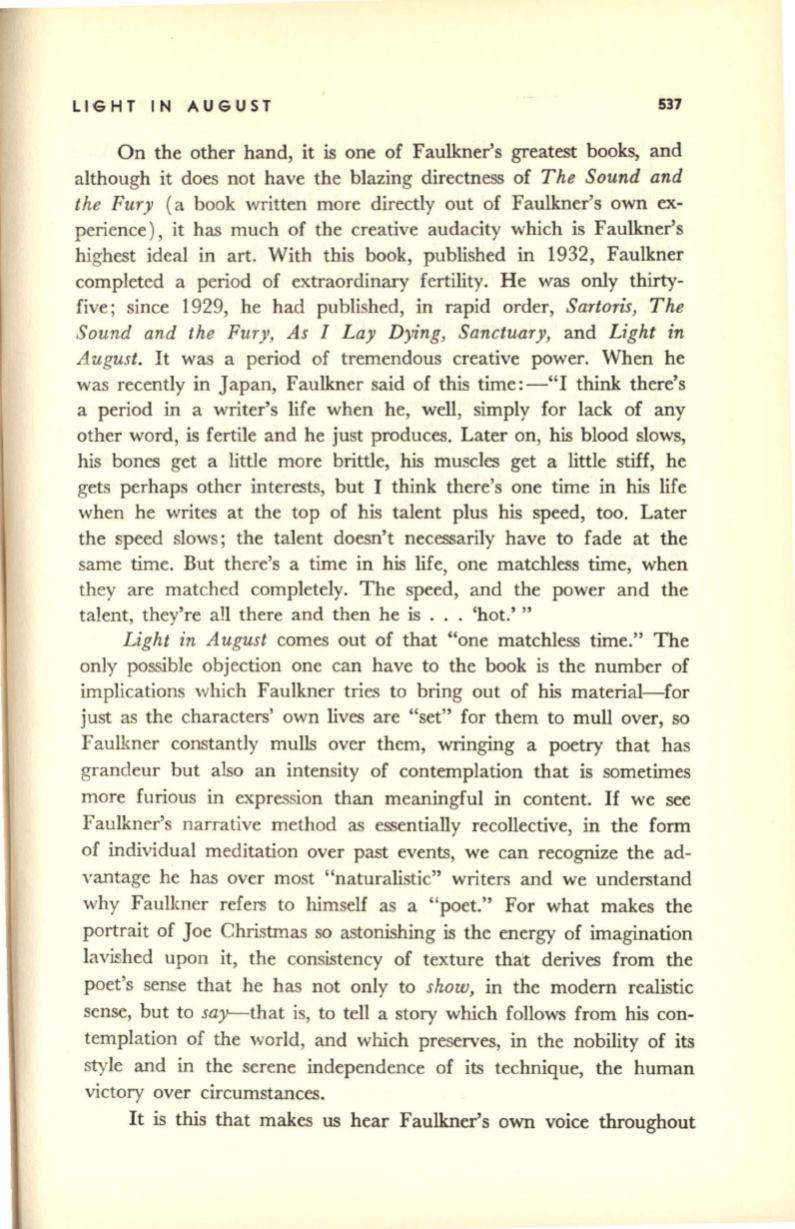
LIGHT IN AUGUST
537
On the other hand, it is one of Faulkner's greatest books, and
although it does not have the blazing directness of
The Sound and
the Fury
(a book written more directly out of Faulkner's own ex–
perience), it has much of the creative audacity which is Faulkner's
highest ideal in art. With this book, published in 1932, Faulkner
completed a period of extraordinary fertility. He was only thirty–
five; since 1929, he had published, in rapid order,
Sartoris, The
Sound and the Fury, As I Lay Dying, Sanctuary,
and
Light in
August.
It was a period of tremendous creative power. When he
was recently in Japan, Faulkner said of this time:-"I think there's
a period in a writer's life when he, well, simply for lack of any
other word, is fertile and he just produces. Later on, his blood slows,
his bones get a little more brittle,
his
muscles get
a:
little stiff, he
gets perhaps other interests, but I think there's one time
in
his life
when he writes at the top of his talent plus his speed, too. Later
the speed slows; the talent doesn't necessarily have to fade at the
same time. But there's a time in his life, one matchless time, when
they are matched completely. The speed, and the power and the
talent, they're all there and then he is . . . 'hot.'''
Light in August
comes out of that "one matchless time." The
only possible objection one can have to the book is the number of
implications which Faulkner tries to bring out of his material-for
just as the characters' own lives are "set" for them to mull over, so
Faulkner constantly mulls over them, wringing a poetry that has
grandeur but also an intensity of contemplation that is sometimes
more furious in expression than meaningful in content.
If
we see
Faulkner's narrative method as essentially recollective, in the form
of individual meditation over past events, we can recognize the ad–
vantage he has over most "naturalistic" writers and we understand
why Faulkner refers to himself as a "poet." For what makes the
portrait of Joe Christmas so astonishing is the energy of imagination
lavished upon it, the consistency of texture that derives from the
poet's sense that he has not only to
show,
in the modem realistic
sense, but to
say--that
is, to tell a story which follows from his con–
templation of the world, and which preserves, in the nobility of its
style and in the serene independence of its technique, the human
victory over circumstances.
It is this that makes us hear Faulkner's own voice throughout


